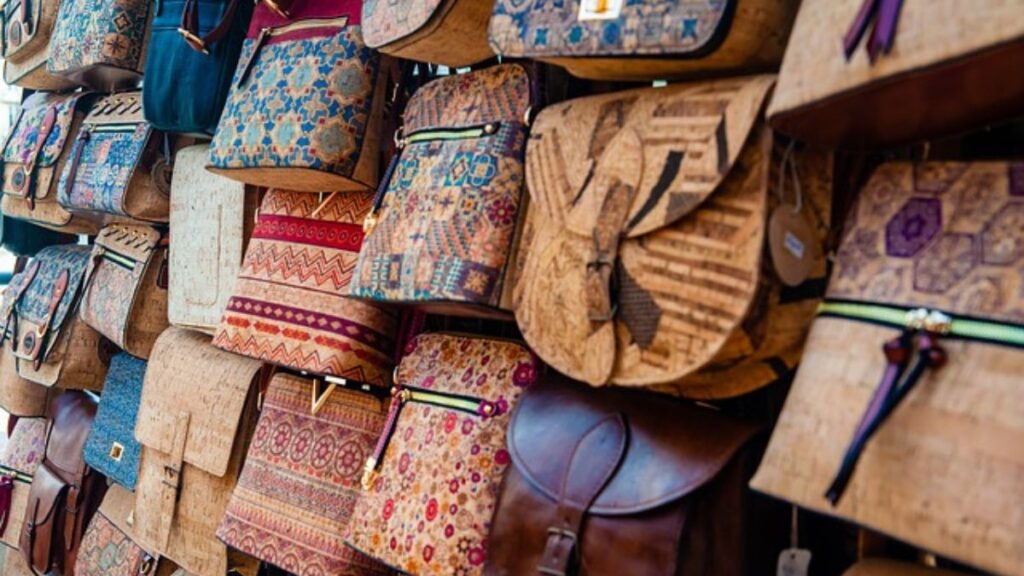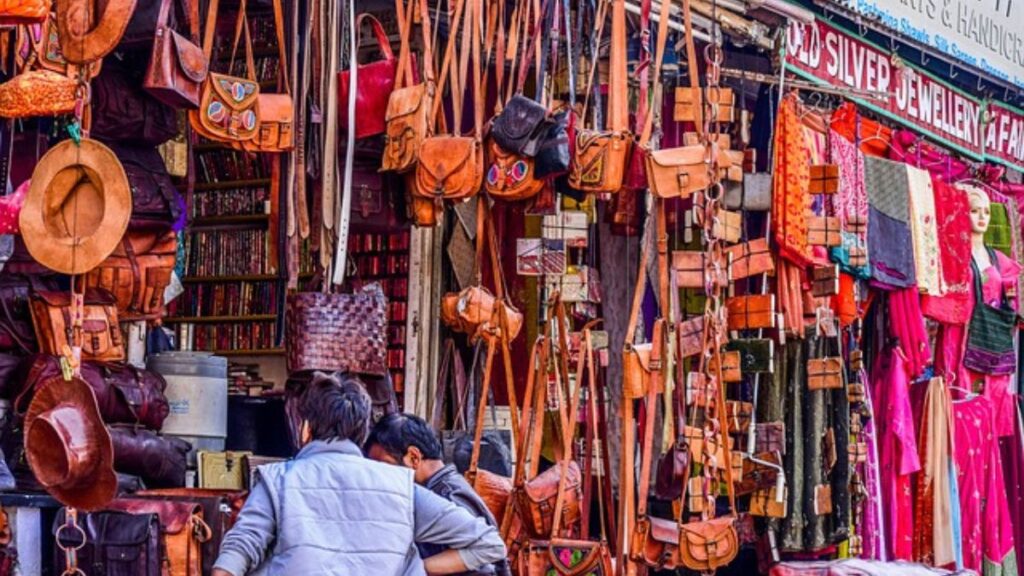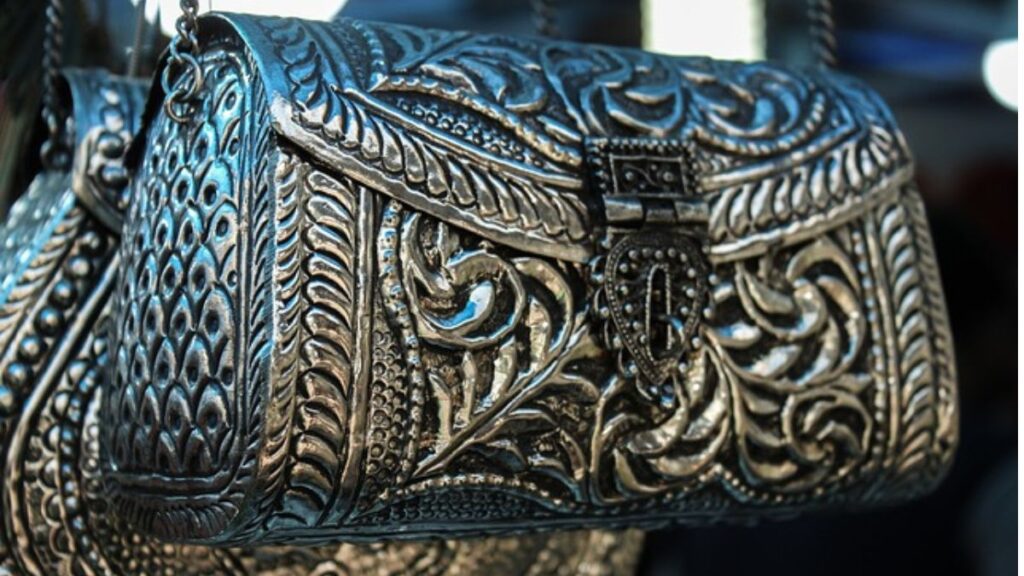Introduction:
Quality Unveiled: Handmade Bags and Their Superior Durability

In a world inundated with mass-produced items, the allure of handmade products stands out, especially when it comes to bags. The craftsmanship, attention to detail, and the promise of superior durability make handmade bags a compelling choice for those seeking both style and substance. In this article, we delve into the world of handmade bags, exploring the craftsmanship that goes into their creation and unraveling the reasons behind their renowned durability.
What is the importance of handmade bags?
Handmade bags hold significance for various reasons, ranging from their unique craftsmanship to the impact they have on individuals, communities, and the environment. Here are several points highlighting the importance of handmade bags:
- Artisanal Craftsmanship:
- Handmade bags are crafted by skilled artisans who often employ traditional techniques and manual tools. The craftsmanship involved in their creation results in unique, high-quality products that showcase attention to detail and dedication.
- Uniqueness and Individuality:
- How Technology Supports Personal Health ObjectivesEach handmade bag is a one-of-a-kind piece, showcasing the individual style and creativity of the artisan. This uniqueness provides consumers with a distinct and personal accessory that stands out from mass-produced alternatives.
- Customization:
- Handmade bags often offer the opportunity for customization. Customers can work closely with artisans to tailor the design, size, and features of the bag to meet their specific preferences, resulting in a truly personalized product.
- Supporting Local Artisans:
- Purchasing handmade bags supports local artisans and small businesses. This contributes to the preservation of traditional skills, fosters a sense of community, and helps sustain local economies.
- Quality and Durability:
- Handmade bags are typically associated with higher quality and durability. Artisans carefully select materials and use manual techniques, resulting in products that are built to last and withstand the test of time.
- Ethical and Sustainable Practices:
- Many handmade bags are crafted using ethically sourced and sustainable materials. This aligns with the growing trend of consumers seeking eco-friendly and socially responsible products, contributing to a more sustainable and ethical fashion industry.
- Connection to the Maker:
- Handmade products often come with a story, allowing consumers to connect with the maker and the process of creation. This connection enhances the overall value of the product, creating a more meaningful and memorable shopping experience.
- Reduced Environmental Impact:
- Handmade bags, particularly those made with sustainable materials, tend to have a lower environmental impact compared to mass-produced alternatives. The emphasis on quality over quantity aligns with environmentally conscious consumer choices.
- Cultural Preservation:
- Handmade bags often incorporate traditional designs and techniques, contributing to the preservation of cultural heritage. The continuation of these practices helps maintain a connection to cultural identity and history.
- Unique Fashion Statements:
- Handmade bags allow individuals to make unique fashion statements. The diversity in design, materials, and craftsmanship ensures that wearers can express their personal style in a way that sets them apart from mainstream fashion trends.
In summary, the importance of handmade bags lies in their craftsmanship, uniqueness, support for local communities, ethical and sustainable practices, and the meaningful connection they create between the artisan and the consumer. These factors contribute to a growing appreciation for handmade products in a world that often emphasizes mass production and uniformity.
Which fabrics are used in making handbags?
Various fabrics are used in making handbags, and the choice of material depends on factors such as the bag’s intended use, style, and desired durability. Here are some common fabrics used in crafting handbags:

- Leather:
- Leather is a classic and popular choice for high-end handbags. It is durable, ages well, and has a luxurious feel. Common types include cowhide, lambskin, and exotic leathers like snakeskin or crocodile.
- Canvas:
- Canvas is a sturdy, woven fabric often used for casual and tote-style handbags. It is durable and can be treated for water resistance. Canvas bags are popular for their versatility and can be easily customized with prints and patterns.
- Cotton:
- Cotton is a lightweight and breathable fabric commonly used for casual and eco-friendly handbags. It’s available in various weaves and can be dyed in a wide range of colors. Cotton bags are comfortable and easy to care for.
- Denim:
- Denim, known for its durability, is sometimes used to create casual and rugged-style handbags. Denim bags can be stylish and are suitable for a more laid-back or urban look.
- Nylon:
- Nylon is a synthetic fabric known for its water resistance and durability. Nylon handbags are often chosen for their practicality, especially in designs like backpacks or travel bags.
- Polyester:
- Polyester is another synthetic fabric that is lightweight, durable, and resistant to wrinkles and fading. It is commonly used in a variety of handbag styles, from totes to evening clutches.
- Suede:
- Suede is a type of leather with a soft, napped surface. It adds a touch of luxury and texture to handbags. Suede bags are often chosen for their aesthetic appeal and tactile qualities.
- Silk:
- Silk is a luxurious and delicate fabric often used in high-end, formal, or evening handbags. While not as durable as some other materials, silk adds a touch of elegance and sophistication to certain bag designs.
- Vinyl or PVC:
- Vinyl and PVC are synthetic materials that can mimic the look of leather. These materials are often used for budget-friendly or vegan handbag options. They are easy to clean and maintain.
- Jute or Burlap:
- Jute and burlap are natural fibers known for their eco-friendly and rustic appeal. These materials are often used in bohemian or eco-conscious handbag designs.
- Linen:
- Linen, derived from the flax plant, is a breathable and lightweight fabric. Linen handbags are favored for their casual and relaxed aesthetic.
The choice of fabric depends on the desired style, functionality, and the overall design of the handbag. Designers often select materials that complement the bag’s intended use and target audience, resulting in a diverse range of fabrics used in the creation of handbags.
Where can I get good quality handbags?
Finding good quality handbags depends on your preferences, budget, and the specific type of handbag you’re looking for. Here are several options for finding high-quality handbags:

- High-End Department Stores:
- Visit luxury department stores such as Neiman Marcus, Saks Fifth Avenue, or Nordstrom. These stores often carry a wide range of designer handbags known for their quality and craftsmanship.
- Designer Boutiques:
- Explore boutiques of well-known designers or luxury fashion houses. Brands like Louis Vuitton, Chanel, Gucci, and Prada have their own boutiques where you can find their latest collections.
- Online Luxury Retailers:
- Websites like Net-a-Porter, Farfetch, and Mytheresa specialize in luxury fashion and offer a curated selection of high-quality handbags from various designers.
- Specialty Handbag Stores:
- Look for stores that specialize in handbags. Some brands focus exclusively on crafting premium handbags, offering a variety of styles and materials.
- Authorized Brand Retailers:
- Purchase directly from authorized retailers of specific brands. This ensures that you are getting an authentic product with the associated quality guarantees. Check the official websites of your favorite brands for a list of authorized sellers.
- Luxury Resale Shops:
- Consider luxury resale shops or online platforms like The RealReal, Vestiaire Collective, or Rebag. These platforms offer authenticated, pre-owned designer handbags at a more affordable price.
- Local Artisan Markets:
- Explore local artisan markets or craft fairs where independent designers and artisans showcase their handmade, high-quality handbags. This is a great way to discover unique pieces.
- Department Store Handbag Sections:
- Many department stores have dedicated handbag sections that feature a mix of designer and contemporary brands. Look for well-established brands known for their quality within these sections.
- Fashion Outlets:
- Outlet stores of luxury brands or high-end fashion outlets may offer discounts on previous seasons’ collections, providing an opportunity to purchase quality handbags at a more affordable price.
- Online Retailers with Reviews:
- Explore online retailers like Amazon, Zappos, or Shopbop that have a wide range of handbags. Check customer reviews to gauge the quality and durability of the bags.
- Local Boutiques:
- Visit local boutiques that curate unique and high-quality items. Some boutique owners carefully select handbags from independent designers, offering a more personalized shopping experience.
When purchasing a handbag, consider factors such as the reputation of the brand, the materials used, craftsmanship, and customer reviews. Additionally, be cautious of counterfeit products by purchasing from reputable and authorized sellers. Whether you’re looking for a luxury designer piece or a well-crafted handmade bag, these options should help you find the perfect high-quality handbag for your needs.
Conclusion:
In the quest for quality and durability, handmade bags emerge as champions, combining artisanal craftsmanship with premium materials and personalized touches. The investment in a handmade bag transcends mere ownership, evolving into a long-lasting companion that weathers the passage of time with grace. As consumers increasingly seek products with substance and longevity, the allure of handmade bags and their superior durability continues to captivate those who value both style and sustainability.
FAQs
1. What makes handmade bags more durable than mass-produced bags?
Handmade bags often use higher quality materials and craftsmanship, which results in superior durability. Artisans take extra care in the construction process, ensuring that each seam is secure and each piece is precisely cut and assembled.
2. How are the materials used in handmade bags different from those in mass-produced bags?
Handmade bags typically use premium materials such as full-grain leather, natural fibers, and high-quality metals for hardware. These materials are chosen for their strength, longevity, and aesthetic appeal, unlike some mass-produced bags that may use cheaper, synthetic materials to cut costs.
3. Are handmade bags worth the higher price tag?
Yes, handmade bags are often worth the higher price due to their durability, unique designs, and the level of craftsmanship involved. They tend to last much longer than mass-produced bags, which can make them a more cost-effective choice in the long run.






